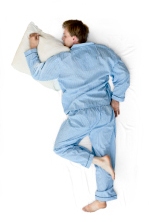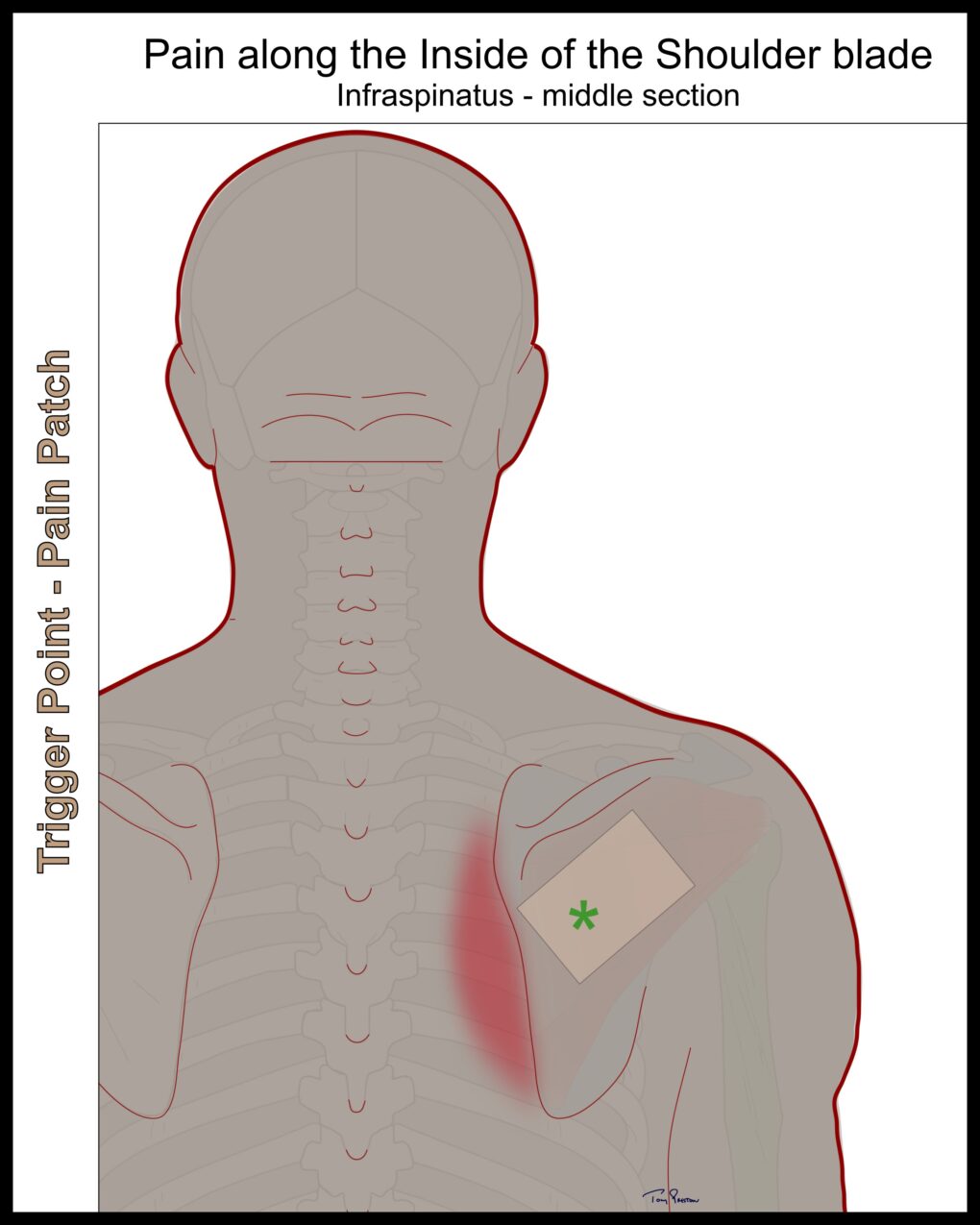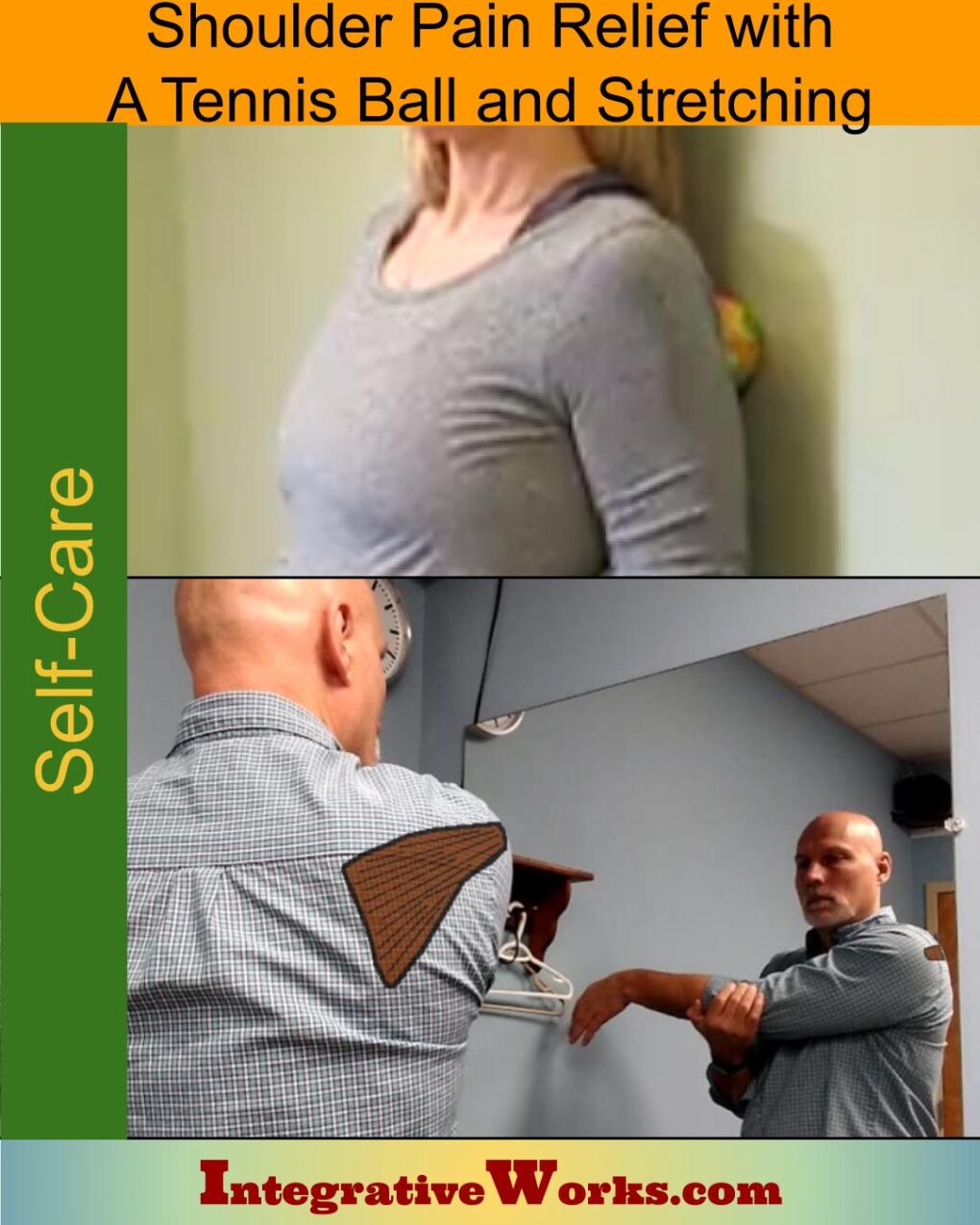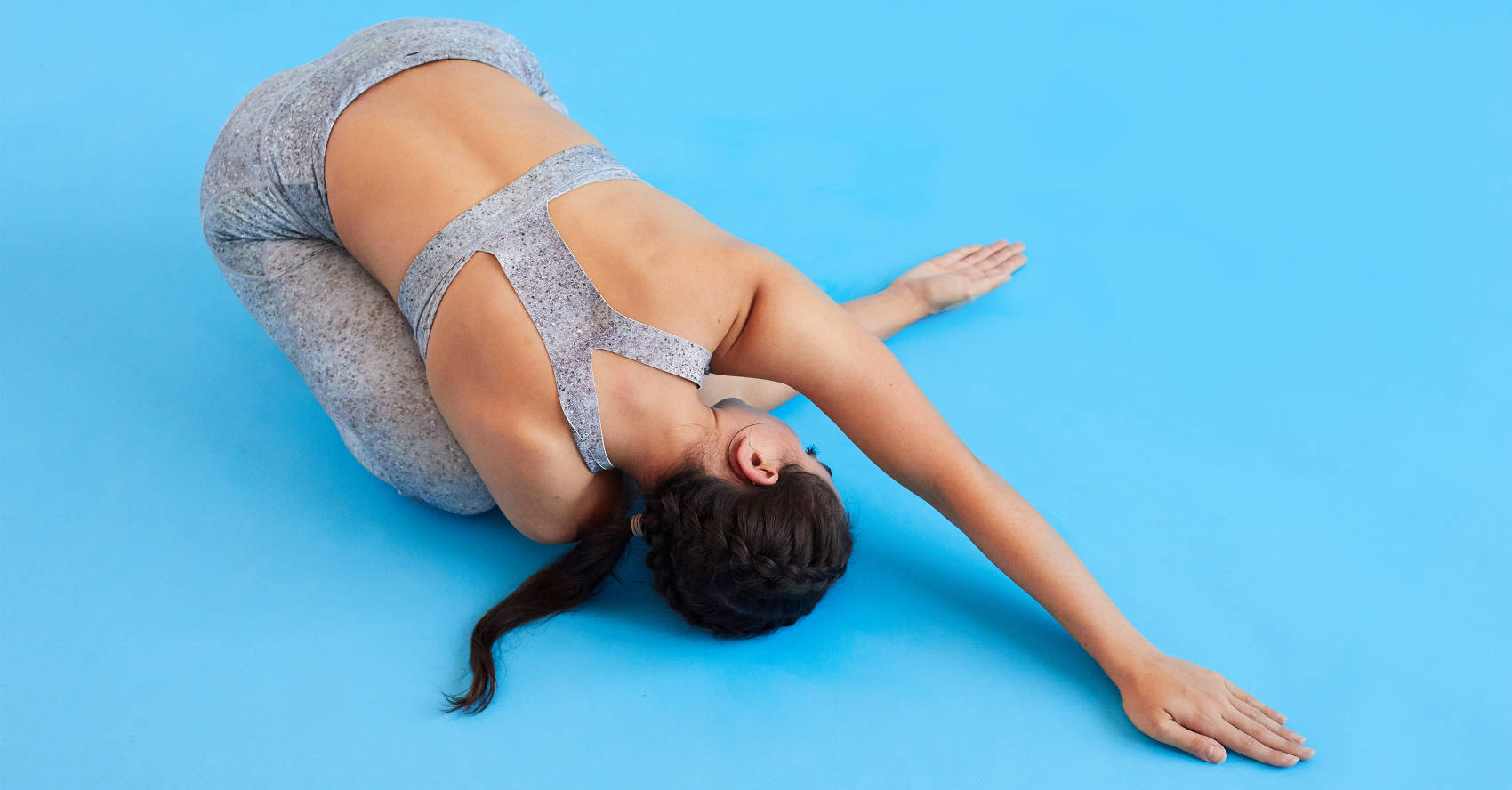Table of Contents
- Activities to Avoid or Change
- For Temporary Relief
- Stretches and Exercises for Longer-Lasting Relief
- Yoga Corner
Here we discuss how you can get relief from shoulder pain while sleeping and from pain inside the shoulder blade. How people describe that pain and activities that create the pain are discussed in these other posts:
- Pain in the shoulder while sleeping
- Pain in the shoulder at the end of the golf swing
- Pain along the inside of the shoulder blade while reaching
Activities To Avoid or Change:
Change your sleeping position:
You can reduce shoulder pain from this rotator cuff muscle by changing your sleeping position.

Wrong Sleeping Position.
Once the shoulder pain becomes chronic, sleeping on that shoulder will aggravate it at night. If the painful shoulder is on the bottom, the arm gets pushed forward in the socket. As a result, the shoulder presses down and behind the humerus. This tension irritates the joint and activates the trigger point. On the other hand, (or shoulder) if it is the painful shoulder on top, draping the arm forward over-stretches the muscle. This position also activates the trigger point and increases shoulder pain.

Better Sleeping Position
Start by sleeping on your side with the painful shoulder behind you. Give it at least 10 minutes before you change position. It will likely be uncomfortable initially, especially if you have a firm mattress. After a few minutes, the glenohumeral joint will shift, and it’ll feel better.
A king-sized pillow along your torso makes this position more comfortable by taking the twist out of your neck. After a few minutes, the shoulder will shift. Then, change your position to sleep on your back.
Changing your sleeping position is important. I have worked on my gym partner’s shoulder off and on for a few years. He had quit complaining about it for some months, so I asked how it was doing. He smiled and said that he started sleeping as I recommended, and the arm quit bothering him.
Don’t Reach for the Sky
This hurts when you stretch your arm upward a little more than usual. It is more aggravating when you reach up and across. Common activities include:
- Changing a bulb
- Painting trim
- Getting something off a high shelf
- Tennis, volleyball service
- Golf swing
For Temporary Relief:

Pain Patches
Mid-sized IcyHot patches work well in the short term. Place one on the back of your shoulder, just under the bony ridge of the shoulder blade. It should cover the center of the muscle shown in the picture.
Pain in the shoulder
If you can, reach around and position the patch to cover the shoulder blade’s lower edge. This position is not essential but may help when your pain is along that inside edge.
Avoid topical creams. They tend to stain pajamas, and the smell wakes people at night.

Pain inside the shoulder blade
If you can, reach around and position the patch to cover the shoulder blade’s lower edge. This position is not essential but may help when your pain is along that inside edge.
Avoid topical creams. They tend to stain pajamas, and the smell wakes people in the night.
NOTE: The standard recommendation is to lay on the “good” side and support your upper arm with a pillow. This position puts the painful shoulder in a level position. When you drape the arm across your chest, it stretches the muscle and activates the trigger point. This supportive position doesn’t fix the long-term problem but is a good idea for temporary relief, especially when combined with the topical patch.
These self-care activities, like over-the-counter drugs, are not intended to replace appropriate medical attention. If you have concerns about these self-care activities, get help from a professional. Use these suggestions and strategies with discretion and at your own risk. See your doctor when your pain is severe, persistent, or not responding to these simple suggestions.
Stretches and Exercises for Longer-Lasting Relief:
Think Locally, Act Globally
Stretching is more effective when it involves a whole shoulder routine that helps identify and resolve global problems in the shoulder instead of just addressing the local issue. Having a therapist evaluate and balance the shoulder through appropriate exercises is helpful, especially when this is chronic.
Press and Stretch
The stretching in this routine is great for this problem, especially with ice-and-stretch or under a hot shower. The description helps you get the stretch right. As a result, you target the shoulder, not the upper back.
The tennis ball treatment is a nice adjunct when stretching is not effective. Make sure that you don’t overdo it, don’t worry, I tell you how to soothe it if you do.
I’d love your feedback on how this works for you and any suggestions you might have.
Email me at integrativeworks@gmail.com.
Yoga Corner
Shoulder Pinch
Does your Shoulder pinch when you are in the Threading the Needle pose? It usually means the humerus is a little forward in the socket. Laying in the sleep position shown above for 90-180 seconds usually shifts the joint and eases this rotator cuff muscle’s pain. Afterward, this pose won’t pinch and hurt in the joint. If not, see your bodyworker.
A small problem in the position of the shoulder joint perpetuates this trigger point. Typically, it just gets worse over time. You should see a bodyworker that knows shoulder work. Most NMT therapists address this by working the rotator cuff tendons, especially subscapularis, which mobilizes the humeral head. Many people will let this problem linger for years and eventually get rotator cuff surgery when they could have addressed it earlier.
Support Integrative Works to
stay independent
and produce great content.
You can subscribe to our community on Patreon. You will get links to free content and access to exclusive content not seen on this site. In addition, we will be posting anatomy illustrations, treatment notes, and sections from our manuals not found on this site. Thank you so much for being so supportive.
Cranio Cradle Cup
This mug has classic, colorful illustrations of the craniosacral system and vault hold #3. It makes a great gift and conversation piece.
Tony Preston has a practice in Atlanta, Georgia, where he sees clients. He has written materials and instructed classes since the mid-90s. This includes anatomy, trigger points, cranial, and neuromuscular.
Question? Comment? Typo?
integrativeworks@gmail.com
Interested in a session with Tony?
Call 404-226-1363
Follow us on Instagram

*This site is undergoing significant changes. We are reformatting and expanding the posts to make them easier to read. The result will also be more accessible and include more patterns with better self-care. Meanwhile, there may be formatting, content presentation, and readability inconsistencies. Until we get older posts updated, please excuse our mess.




